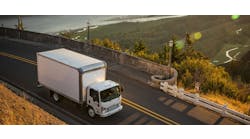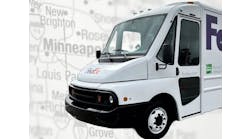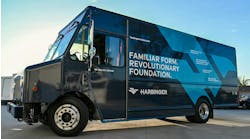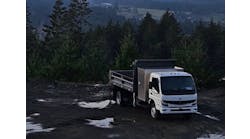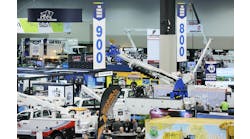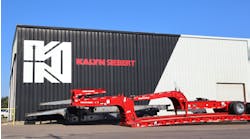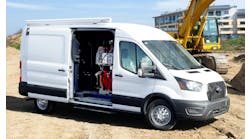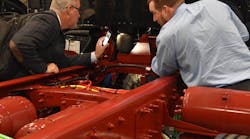Representatives from Daimler Trucks North America (DTNA) provided product and technical resource updates during the 2019 Truck Product Conference.
Alex Lee, product marketing manager for the Freightliner M2, said DTNA’s goal with its Freightliner eCascadia and eM2 electric vehicles is to deliver the widest range of Class 2-8 e-mobility trucks and tractors in the industry. Freightliner, which introduced the trucks in summer 2018, started delivering them to select fleets last December and plans to enter series production of the battery-electric trucks (BETs) in 2021.
“In less than two years we plan on being able to provide eCascadias and eM2s into the field for public consumption,” Lee said.
Freightliner developed its e-mobility vehicles in concert with customers, utilities, and infrastructure and government at all levels, Lee said, with the goal of making its BETs a practical and ideal solution for fleets with dedicated, repeatable routes of the pickup-and-delivery, last-mile, drayage and regional-haul varieties.
Target specs for the eM2 in 2021 production include peak output of 480 horsepower, 325 kilowatts per hour of usable capacity, and 230 miles of driving range, depending on weather, terrain and other factors. With charging, the goal is a 60-minute quick charge to 80% battery capacity. Freightliner also is targeting pickup-and-delivery box vans with its wheelbases in the 270-inch range, enabling 26- to 28-foot dry van box applications in Class 6-7.
New options and features include the Cummins X12 engine in the 114SD truck announced last year that now is in production. Key benefits with the X12 are 600 pounds in weight savings and improved fuel economy through reduced friction. The engine can deliver up to 500 horsepower and 1,700 pound-feet of torque.
The 600 pounds in weight savings means more payload or fuel capacity, depending on the application.
DTNA continues to grow its safety systems portfolio, with new options for the WABCO OnGuard system and Bendix AutoVue Lane Departure Warning system, and new camera and telematics pre-wiring options with the M2 106, 108SD and 114SD.
Freightliner also added a fourth mounting point on top of the cab that is 3 ½ inches farther forward than the other three points. The fourth mounting point originally was designed for catwalks but can be used for lightbars, utility lights or any other roof-mounted accessory. The new point also comes with a bigger backing plate.
Other new or improved options include liftgate power with logic control, which provides 200 amps at the end of the frame; washable HVAC pre-filter for vehicles operating in dusty environments; washable main filter for the M2, M2 112, 108 and 114SD; severe-duty wiring harness, ideal for snow plow applications; rear 21K suspension with innovative bilateral spring design, and TufTrac Generation 2 suspensions that add a disc brake option.
DTNA also made many improvements and updates to its electrical guide, including adding detailed diagrams regarding the power net distribution box, liftgate pre-wiring information and ease-of-use features like an improved, more navigable table of contents, and new pdf versions of older, paper-based body builder books.
All these resources and much more, including general information, updated VIN coding guides, links to Cummins PTO control information and troubleshooting tips are available at dtnaconnect.com, DTNA’s site for truck equipment manufacturers.
Registration at dtnaconnect.com provides access to a host of tools, including PartsPro, EZWiring, ServiceLit, ServicePro, DiagnosticLink, the body builder guide and CHEC—DTNA’s Custom Hardware and Electronic Configurator tool, which includes the ability to search, design, test and troubleshoot flexible software features or parameters on Freightliner trucks’ electronic controllers, without having to rely on Daimler Trucks Engineering.
The upfitter friendly CHEC tool provides new web-based software to unlock the power of SmartPlex, which can be used to program custom logic controls that are downloaded to the truck. Many custom configurations that already were created are available through the CHEC tool, including features for liftgate control.
The CHEC tool is available for three different user levels aimed at technicians, developers and engineers. Training for techs and developers is web-based and engineering training is done at company headquarters.

